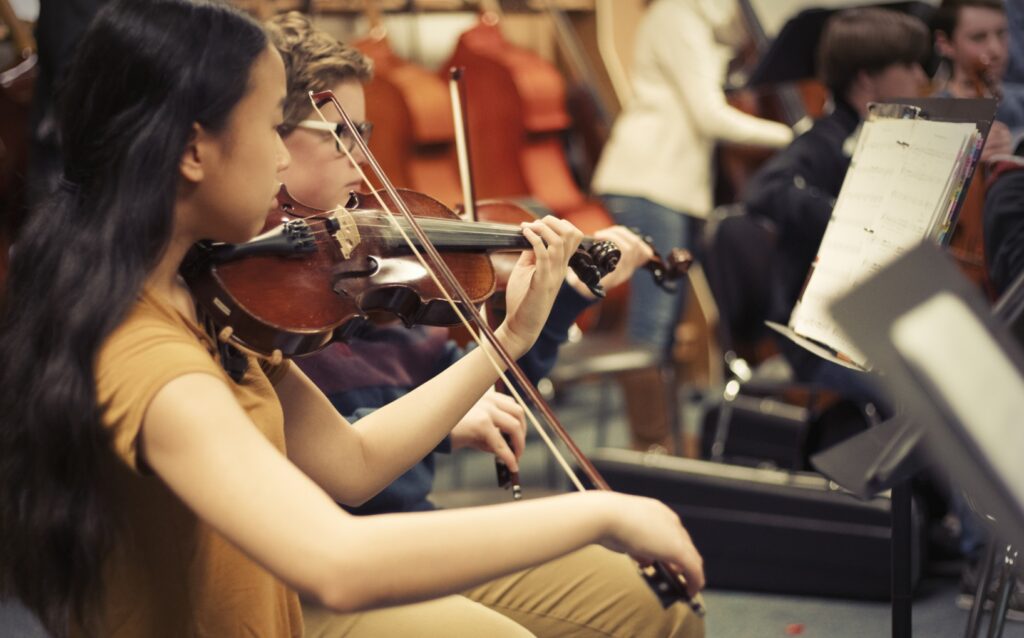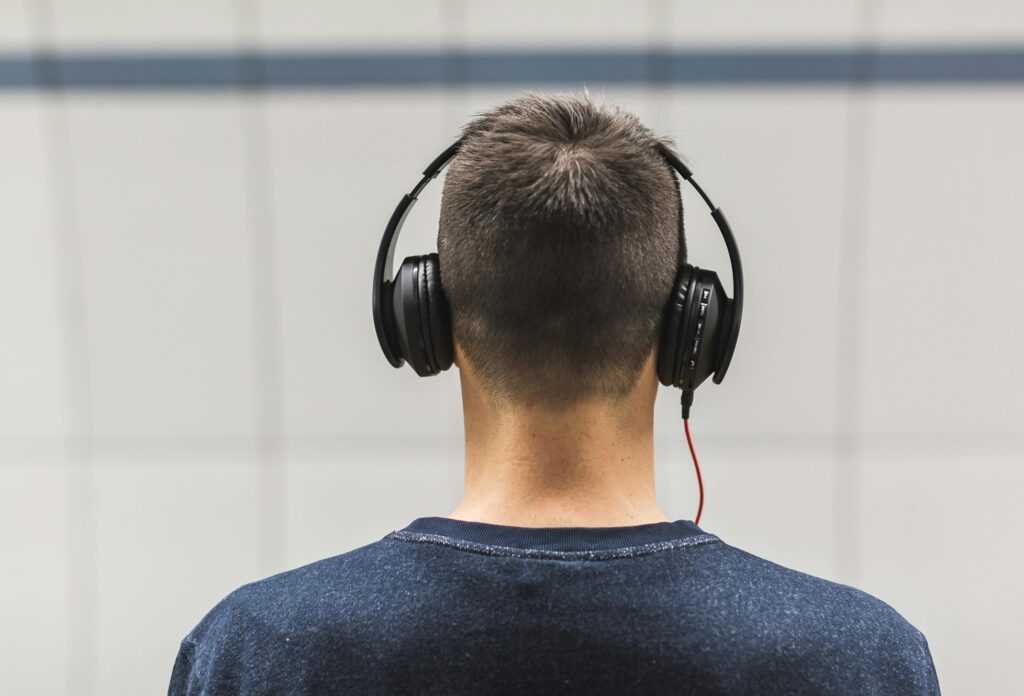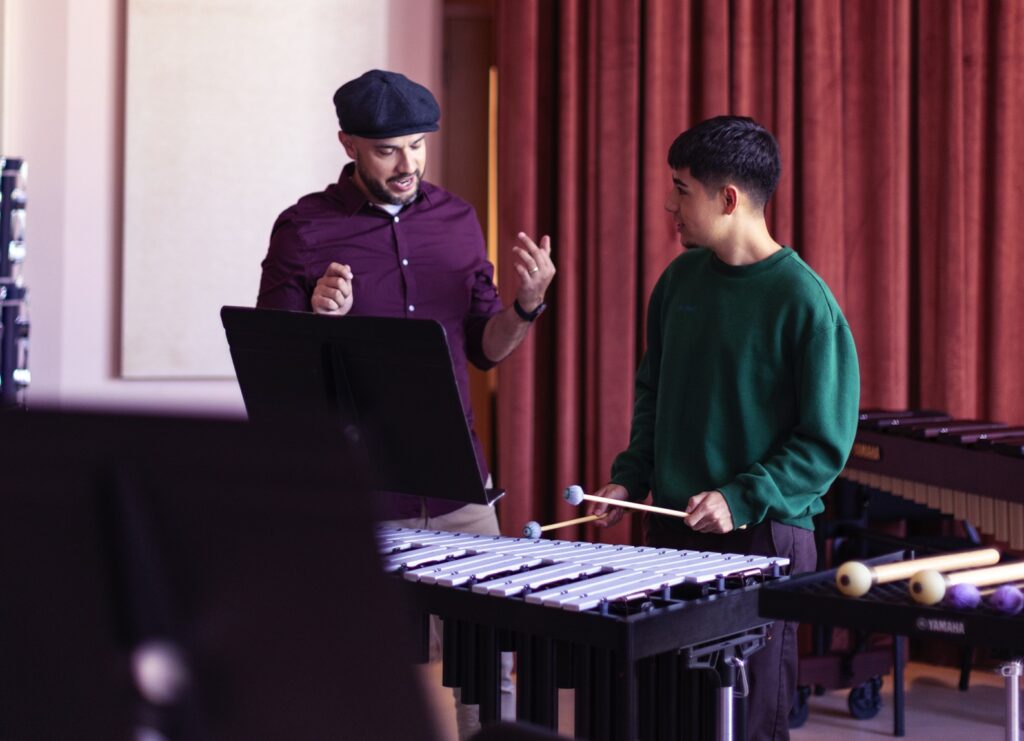BAND AND: A New Concept for Band Class that Students Love
A music educator created BAND AND, a program where students explore composition, different genres, production and technology and much more.
Many years ago, I was searching for a thesis project idea for my Curriculum and Instruction master’s program at the University of St. Thomas. I wanted to find something that would help secondary music educators look beyond the traditional idea that class time for a large ensemble course should be used solely for rehearsing music for performance. So, I wrote a composition curriculum for my students at Chaska Middle School West in Minnesota to create their own music. Then, I took one week of classes following a mid-year performance cycle to try out the first part of this curriculum.
Original Lessons Learned
Through this process, I learned so much.
- The creativity coming out of my students was like nothing I have ever seen before. Instead of the typical large ensemble rehearsal where students are wrong if they don’t play or sing exactly what is written on the page, they were able to figure out what they thought sounded great.
- In some cases, students who struggled with playing their instruments excelled at composing. This was the most engaged and excited they had been about music class all year.
- The “lost” rehearsal time did not affect the band’s ability to perform an amazing concert. If anything, it made students better musicians and faster learners during rehearsal. Sometimes we would replace doing a traditional band song with the students’ original compositions.
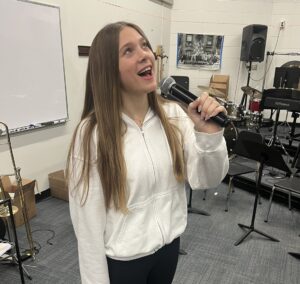
All Music
Many music educators are big proponents of “Music for All.” What happens when you turn that statement into “All Music” instead? I took my composition project to a new level by taking a few class periods to teach not only composition, but music from around the world, different genres, production and technology, and different instruments. This is where my BAND AND concept was born.
In our program, we have A-day and B-day band that meets every other day. In any given week, A-day band will meet on Monday, Wednesday and Friday, and B-day on Tuesday and Thursday. The following week, the days switch for A-day and B-day. Every Monday is “BAND AND Day,” which means that every other week, students have one class period that is not a traditional rehearsal. Instead, they learn a different element of music. Below is a list of eight different themes that I developed for BAND AND.
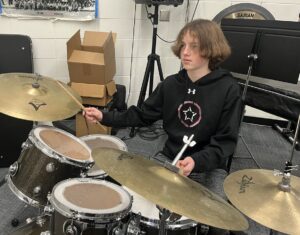
1. Jazz Lounge
I dim the lights, get out some battery-operated candles and put some tablecloths on a few stands and dress semi-formal to set the mood. We start class with a brief history of jazz along with a few quick videos of jazz legends like Louis Armstrong, Duke Ellington or Ella Fitzgerald. We talk about the form of a jazz standard including the part that is improvised.
That’s followed by me and/or a student or two from our jazz band performing a standard like “Satin Doll” or “One O’Clock Jump” with a YouTube backtrack. Then we get all the students involved with call and response.
Use the first three notes from a concert B-flat blues scale. Play along with a B-flat blues backtrack on YouTube to make it sound better. Follow this up with a Q&A where students can make up their own response but only using the same three notes. Then have each student solo on their own. Just one measure per student, and I tell them they must play something, even if it’s just one note. After every student has soloed, ask for volunteers to take longer solos.
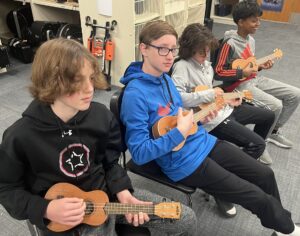
2. Rock Festival
If you have some stage lights, set them up. Crank some Queen or Bon Jovi as students enter the room and dress in your best 1980s hair-band garb or 1990s grunge-rock flannel. Class starts with a brief history of rock and roll dating back to Elvis Presley and The Beatles and then classic rock of the ‘70s, heavy metal of the ‘80s, grunge and post punk of the ‘90s. Then discuss how rock and roll still lives on in this century with brief video clips of songs like “Twist & Shout,” “Bohemian Rhapsody,” “Livin’ on a Prayer,” “Smells Like Teen Spirit” and “Ain’t It Fun.”
Hand out a classroom set of guitars or ukuleles or both and teach them basic chords like G, A, C and D. You can even set up some keyboards and a bass guitar if you like. The class culminates with playing along with the YouTube videos “Sweet Home Alabama” by Lynyrd Skynyrd and “Sweet Child O’ Mine” by Guns N’ Roses (down a half step using the Google Extension “Google Transpose”). Have the students play the chords, not the riffs (which are more advanced). Both these songs are very repetitive. Other songs that work well are “The Middle” by Jimmy Eat World and “All The Small Things” by Blink-182. Don’t forget to teach the power stance and throw in an occasional leg kick.
3. Country Festival
This is similar to Rock Festival, but your attire is jeans and a cowboy hat. And your history includes Hank Williams, Johnny Cash, Willie Nelson, Dolly Parton, Garth Brooks, Shania Twain, Carrie Underwood and Kenny Chesney. Great songs to play along with are John Denver’s “Take Me Home, Country Roads,” Dolly Parton’s “Jolene” and Darius Rucker’s “Wagon Wheel.” If you have them, you might want to demonstrate a banjo, violin and steel guitar as well.
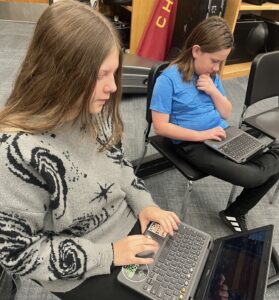
4. Recording Studio
Demonstrate how to use a digital audio workstation (DAW) like Cubase or BandLab. If you need a demonstration yourself, most DAWs have tutorials on their sites or on YouTube. A good first basic lesson is to show students how to use the beatmakers and on-screen piano keyboard to create music as well as recording their voice or live instrument. Then show them how to use the pre-programmed loops. Demonstrate how to loop and split tracks as well as control volume. Then show students how to save and export a file. Talk about how pop songs of virtually any genre have a beat, bass part, harmonic content/hook and vocals, so they should have at least these four tracks.
A second lesson might include a discussion on the typical verse-chorus-verse-chorus-bridge/solo-chorus form and then have students create a song using this form. Play a couple of examples — I like to use two contrasting genres/eras like Bon Jovi’s “Livin’ On A Prayer” and Miley Cyrus’ “Flowers.” Different songs but same form. If you are feeling courageous, create a song in front of your class — students love this!

5. Hip-Hop Club
Draw some graffiti on your white boards, crank some hip-hop and choose your favorite hip-hop styles to wear to welcome kids for this amazing day. Then talk about the history of hip-hop from the streets of New York with DJ Kool Herc in the 1970s to Run-DMC and Grandmaster Flash of the 1980s and then the explosion of hip-hop into the mainstream in the 1990s with 2Pac and Notorious B.I.G. followed by the wealth of hip-hop stars of this century like Beyonce, Eminem and Drake. Then spend some time doing the four elements of hip-hop:
- Rap: Have students play a game called “I Know a Word.” Each student one at a time will say, “I know a word, and the word is …” and they say a word. The next student says the same phrase and comes up with a word that rhyme with the first word. Another fun activity is to rap children’s board books that they read when they were little. A great one is called “The Story of Rap.” Both these activities are great while using a beat created on a DAW.
- DJ: This starts with creating beats, which most DAWs have. The site you.dj is great because it has a virtual DJ controller, but you must check for the appropriateness of song lyrics. If you have room in your budget, purchase a DJ controller. You can find them for under $200, and they come with Serato, which is pro-level DJ software that is very user-friendly. If you have a controller, have a couple students come up at a time and spin the hits. A final option is teaching beatboxing. There are some great tutorial videos on YouTube by TylaDubya.
- Breakdancing: I usually bring in a guest artist or another staff member to teach this. Or honestly, there is always a student who knows some basic hip-hop dance that wants to try to teach their skills.
- Graffiti: Some teachers shy away from graffiti because they think it has a negative connotation. Actually, it’s a wonderful form of expression and you might want to see if the art teacher can come in and demonstrate. There are also many great YouTube graffiti tutorials.
6. Drum Circle
Drum circles are a wonderful way to teach improvisation, learning music by rote and learning music from different cultures. I’m a huge fan of Will Schmid’s “World Music Drumming” books. They have so many great songs, activities and curricular ideas that will provide hours of BAND AND fun.
A drum circle activity that my students enjoy is “When is Your Birthday?” The students and I play the cadence of the words, and we go around the circle and ask each student “When is Your Birthday” and they answer. All the while, we play the rhythm and create a repetitive song.
A second activity is to teach the circle an ostinato pattern that they repeat while different students take turns improvising over the top of the ostinato. Or consider having two or three ostinato patterns that happen simultaneously, which helps students gain rhythmic independence and teaches them layers of a song.
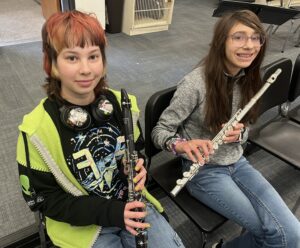
7. Movie/Video Game Scoring Room
Start by showing your class some of the greatest movie scores and video game themes of all time like anything by John Williams or Hans Zimmer for movies or “Mario,” “Halo,” or “Tetris” for games. Then find a short clip (less than a minute) from a movie or a game and use WeVideo or another movie-editing app to take all the sound out of it. Share this with your students. Then, have them use a DAW to create their own music, making sure that they notice where transitions and big moments are so they can create a timeline of when the music should change or climax. After they export their song onto WeVideo, have them record their own voices to create dialogue, singing or sound effects. Students love this project and usually want to choose their own movie or game scene. Leave them wanting more!
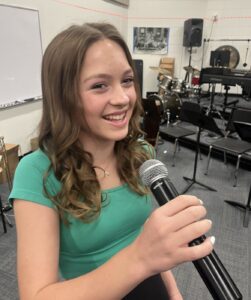
8. Composers Desk
It all comes back to where it started. Have students write an eight-measure song for their instrument. Set basic guidelines like range restrictions, key and time signature options, and make sure they know that every measure must have at least one note and no measure can be repeated more than once. Add at least one dynamic, articulation and tempo. Here’s my favorite guideline: “You have to be able to play it.” Maybe you actually have them play it!
The first Composer Desk BAND AND day is on staff paper so students learn how to write notes, rests and symbols as well as placing the right number of beats in each measure. Second day is on a notation site like Dorico or Noteflight. The next project could be a duet where you talk about good intervals first. Another project might focus on themes and variations.
Outro
BAND AND has become a favorite activity for students. They can’t wait for Mondays. You will be amazed at the number of students who will randomly come up to you to say that they are now taking guitar lessons, wanting to join jazz band or showing you their new original song or movie theme. This is definitely a way to get students on fire about music.










